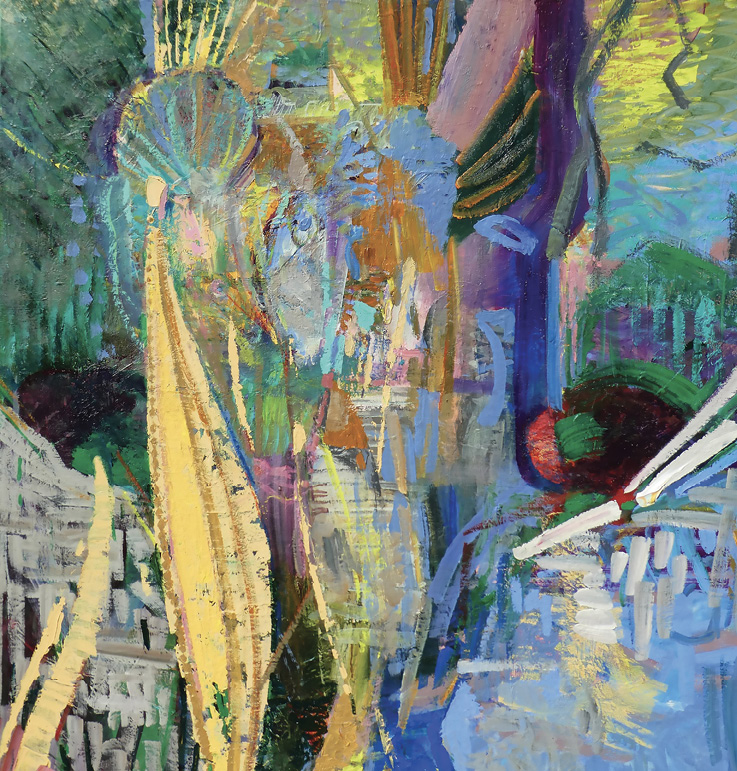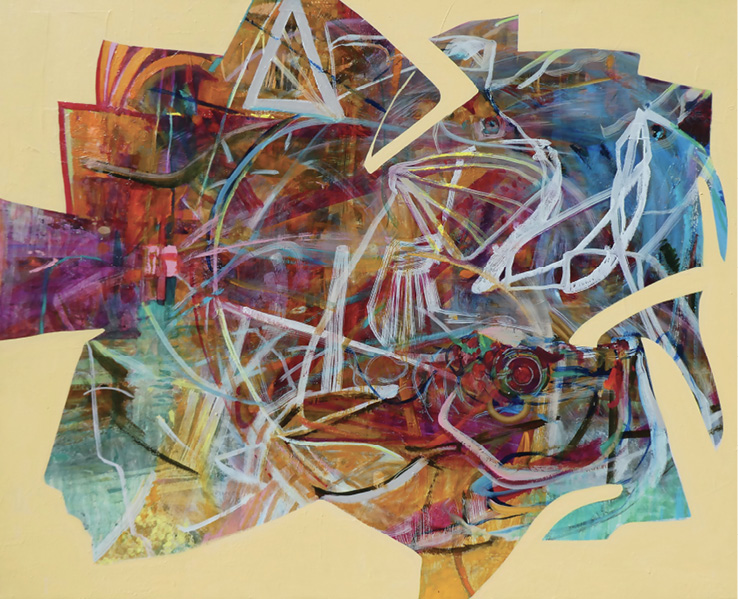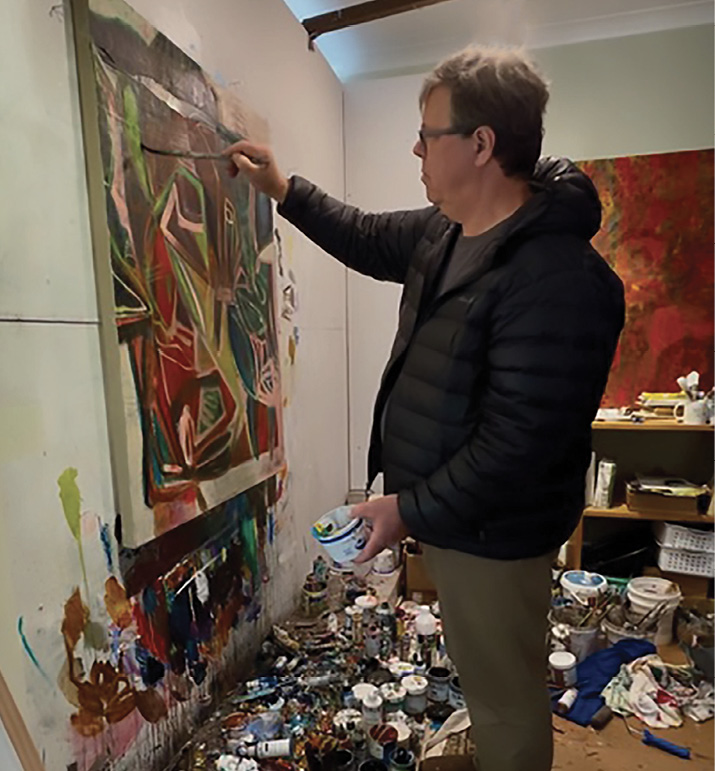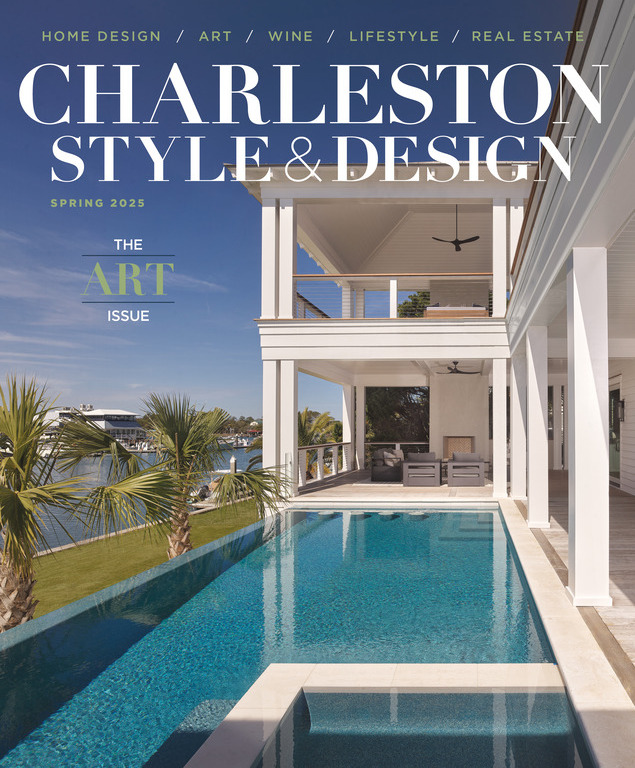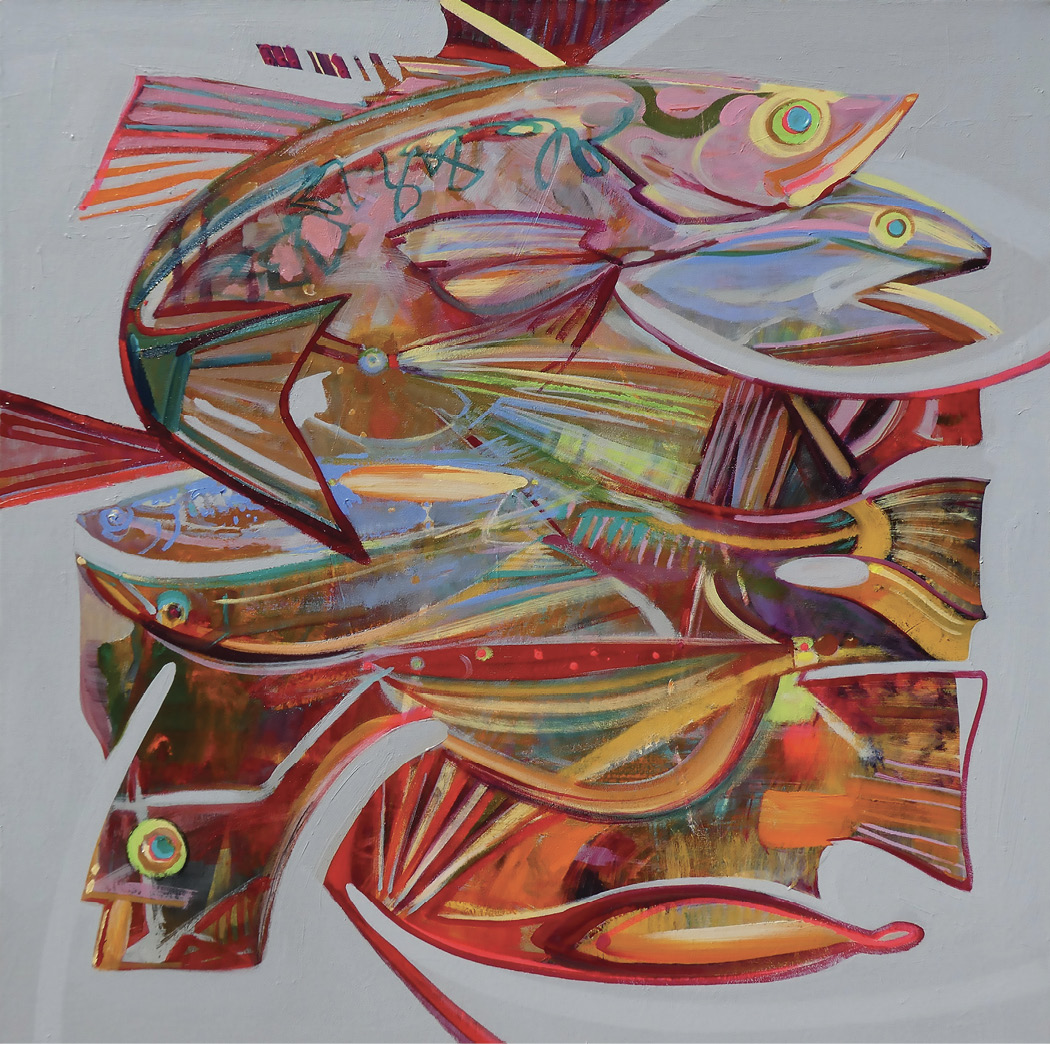
Nature, our finest artist, has inspired no end of painters, sculptors, photographers and creatives of every stripe. It is no less true of Mike Williams, an abstract painter and sculptor long fascinated by the natural world.
“My experiences outdoors, including fishing and observing nature, have served as my primary sources of inspiration and points of departure in the majority of my work,” says the Columbia, South Carolina, resident, who is represented in Charleston by Hagan Fine Art.
Born in Sumter, South Carolina, in 1963, Williams earned a BFA in painting from the University of South Carolina in 1990, though he had begun his professional career two years earlier.
“Through the study of art history, I discovered a preference for abstraction beginning with the impressionists and expressionists,” he recalls. “I particularly liked modernist art, postwar art and the rise of the avant-garde in New York, and I began to move past realism to more expressive forms of art making.”
Though he is well-versed in oils, more recently Williams has focused on water-soluble media, partly for its versatility. His striking sculptures, which he took up beginning in 1997, are forged using carbon steel, stainless steel and found objects.
“I mostly use water-based media now as I prefer the faster drying times, which better suits my approach to working,” he explains. “By using acrylics, I can safely paint directly onto paper or unprimed canvas when desired, and the various mediums available are readily compatible with pastels, powdered pigments and most nongreasy drawing materials.”
His found object work also reflects a broader interest in conservation. Whenever feasible or required, recycling and redirecting materials has always been an element in his work. “I learned to weld as a teenager,” says Williams. “It was then I recognized both the immediacy it allowed for building as well as its permanence. Aside from the physical space sculpture occupies, one of the best aspects would have to be the shadows it casts in the presence of light.”
For the most part, Williams regards painting and sculpting as differing yet complementary approaches toward the same aim. “The primary goal is to create an object that takes on a life of its own but shares the connection to my other paintings and objects,” he explains. “Trying to convert a line drawing into a 3-D object requires an entirely different set of skills and muscles even as one informs the other.”
Williams says he did not have a mentor, as such, yet benefited immensely from meeting J. Bardin of Elloree, one of South Carolina’s most respected abstract painters, whose work won national acclaim. “We connected and our friendship grew,” Williams says. “He was encouraging, made regular studio visits and offered constructive criticism. It meant the world to me to have him in my corner. We remained close friends until his death [in 1997].”
Over the past 35 years, Williams also has drawn encouragement from family, friends, fellow artists and gallerists, who inspired him in his continued journey and creative practice.
Williams’ work embraces memory and metaphor in addition to nature as the foundation of his art, though he says emulating the latter on any level is humbling. “Trying to create an object that successfully evokes any complex dynamic of the natural world or its inhabitants is no easy task yet almost always yields rewards and a better understanding of the subjects,” he says. “I work mostly from memory, recalling experiences and the places I love to explore.”
Williams associates many aspects of life with the contemplative act of fishing. “Before we had computers on boats to identify fish under the water, we relied solely on instinct, past experiences and knowledge for success. This, to me, is the same as trying to coax a stunning painting from a few tubes of paint and a stick with hair attached. Man and nature, predator/prey relationships, the shapes and colors and behaviors of fish and their inherent symbolism associated with food, religion and life are all themes that flow through my body of work,” he says.
Interestingly, Williams credits sign painting in college as being instrumental in the development of his art. “It was mostly for commercial purposes and a way to make a living and be independent at once,” he explains. “But it provided great discipline to hone my skills since it required being able to paint on many different surfaces using specialized brushes, rollers and such. It was an invaluable experience that benefits me daily, and it was fun.”
Apart from Hagan Fine Art, Williams’ paintings and sculptures have been exhibited in the South Carolina State Museum, the Columbia Museum of Art, the Carillon Building in Charlotte, the SunTrust Plaza in Atlanta and the Volksbank in Kaiserslautern, Germany.
Any artist will tell you it’s difficult to secure representation in the art world and to establish a mutually rewarding working relationship with a gallery. Williams and Hagan Fine Art fit hand in glove.
“It’s invaluable to find those who are so enthusiastic and deeply committed to promoting whatever you create,” says Williams. “I applaud the commitment Hagan has shown, beginning with my introduction last October, their participation in Art Miami, and planning my upcoming exhibition on May 2. Aside from the satisfaction which comes from making the work, having it acknowledged and appreciated is also important.”
Ultimately, it all goes back to nature. “My constant interaction with nature is one of my biggest influences,” Williams says. “I’ve made a career combining my knowledge of subjects I’m passionate about with the observational and mechanical skills I’ve learned and chosen to practice throughout my life—thus far.” *
Bill Thompson writes about the arts, design and travel.
